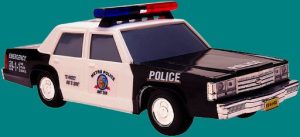How does the 911 system work?

The 911 System
Did you ever wonder what happens when someone calls 911? Initial communication made via a cell phone by dialing “911” typically does not route directly to the local dispatch agency. Instead, the caller is routed to either the state police or regional dispatch center. The person answering the call, usually the dispatcher, does not know the physical address or from which region of the state the call is being made, so he/she will ask for this information.
The line will remain open to ensure the caller is connected to the appropriate local agency where the incident is occurring.
The frequent use of cell phone communications plus this method of routing the caller may create complaints against EMS agencies for a delay in responding to an incident.
What happens next
A dispatch center located in the same community usually answers initial communications made from a fixed telephone line (landline). Landline calls capture the exact caller’s address even in the event the caller becomes disconnected.
Communities that have enhanced 911 capability systems automatically capture the address and the telephone number, respectively. Often, in rural areas, the landline call is first routed to a regional dispatch center before being routed to the local agency. However, regardless of how the emergency 911 call enters into the system, it enters through that agency’s public safety answering point (PSAP).
The 911 System is always available
PSAPs are emergency “switchboards” manned 24 hours a day, by private, public, or state trained dispatchers or police officers.
These dispatchers contact emergency units to respond by means of pagers, voice, or text communications. Depending on the state where the PSAP is located, there is a redundant system of logging incoming emergency calls to the PSAP. Logging of calls is performed via an electronic or paper log-in system.
The LNC through the attorney should obtain all electronic and paper log-in records from these agencies. The 911 center may retain call recordings for a limited period; the attorney may need to act quickly to request this evidence.
Emergency agencies that respond to the incident document their involvement in the incident through written or electronic reporting and each agency performs this function differently. Each police officer will document his/her role in the incident. The commanding fire officer will document the fire department’s role. EMTs document patient care and treatment. This documentation may all be useful in reconstructing the patient’s condition and details about times.
Modified from Tom Quail, Enhance your Investigations Using Technology, The Journal of Legal Nurse Consulting
1) The technological devices that may contain information to confirm or deny allegations involved in a case.2) What information these technological devices retain
